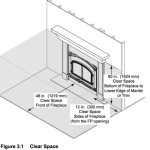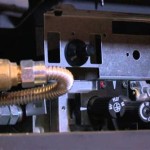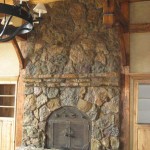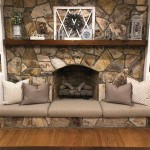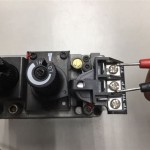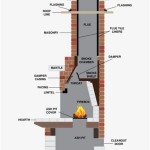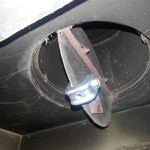```html
Built In Gas Fireplace Ideas: Design and Functionality
Built-in gas fireplaces offer a compelling blend of aesthetic appeal and functional heating within a home. Unlike traditional wood-burning fireplaces, gas models provide a convenient and often more efficient heat source, eliminating the need for wood storage and reducing the mess associated with ash and soot. Further, built-in designs seamlessly integrate into a room's architecture, becoming a focal point without dominating the space. Several factors influence the selection and implementation of a built-in gas fireplace, including the desired style, heating capacity, venting requirements, and installation costs.
The versatility of built-in gas fireplaces allows homeowners to customize their living spaces to reflect their personal tastes. Design options range from minimalist, contemporary styles featuring clean lines and expansive glass fronts to more traditional designs that mimic the look of classic wood-burning fireplaces, complete with faux logs and brick interiors. Choosing the right style and incorporating appropriate design elements is critical to achieving the desired ambiance and integrating the fireplace seamlessly into the overall room decor.
Selecting the Right Style and Design
The first step in choosing a built-in gas fireplace is determining the desired style. Modern designs often feature linear burners, which create a long, horizontal flame that is both visually striking and efficient in distributing heat. These fireplaces frequently incorporate reflective glass or metal surfaces to enhance the flame's brilliance and create a sense of spaciousness. Traditional designs, on the other hand, typically feature realistic-looking gas logs arranged in a firebox, mimicking the appearance of a wood-burning fire. Brick or stone surrounds can further enhance the traditional aesthetic.
Beyond the overall style, the fireplace's surround plays a crucial role in its visual impact. Common materials for fireplace surrounds include stone, brick, tile, and wood. Stone surrounds, such as granite or marble, lend a sense of luxury and permanence, while brick surrounds offer a rustic and traditional feel. Tile surrounds provide a versatile option, with a wide range of colors, textures, and patterns available. Wood surrounds can add warmth and character to a room, but it's essential to ensure they are properly protected from the heat of the fireplace.
Consider also the fireplace's viewing area. Larger viewing areas provide a more dramatic and immersive experience, allowing for a better view of the flames. However, larger viewing areas may also require more powerful burners to produce a visually impressive flame. The shape of the viewing area is another important consideration. Linear fireplaces typically have rectangular viewing areas, while traditional fireplaces may have arched or rectangular openings.
The integration of media, such as decorative glass, river rocks, or ceramic logs, can further customize the fireplace's appearance. These elements add visual interest and can be chosen to complement the room's overall color scheme and design aesthetic. Some fireplaces also offer adjustable flame height and intensity, allowing homeowners to customize the fire's appearance to suit their preferences.
Understanding Heating Capacity and Venting Options
The heating capacity of a built-in gas fireplace is measured in British Thermal Units (BTUs). The appropriate BTU rating for a fireplace depends on the size of the room it will be heating and the desired level of warmth. A larger room will require a fireplace with a higher BTU rating to effectively heat the space. It's essential to choose a fireplace with the appropriate BTU rating to avoid overheating or underheating the room. Consulting with a qualified HVAC professional can help determine the ideal BTU rating for a specific application.
Venting is another critical consideration when installing a built-in gas fireplace. Gas fireplaces require proper venting to safely exhaust combustion gases, such as carbon monoxide, outside the home. There are two main types of venting options for gas fireplaces: direct vent and vent-free. Direct vent fireplaces draw combustion air from outside the home and exhaust combustion gases outside the home through a sealed vent system. This type of venting is considered the safest and most efficient option. Vent-free fireplaces, on the other hand, draw combustion air from inside the home and do not require venting. While vent-free fireplaces offer greater installation flexibility, they are subject to certain restrictions and may not be suitable for all homes due to concerns about indoor air quality.
Direct vent fireplaces offer several advantages over vent-free models. They are more energy-efficient, as they do not draw heated air from inside the home for combustion. They also pose a lower risk of carbon monoxide poisoning, as combustion gases are exhausted directly outside. Furthermore, direct vent fireplaces can be installed in a wider range of locations, as they do not require proximity to an exterior wall or window. When choosing a direct vent fireplace, it's essential to ensure that the venting system is properly installed and meets all applicable building codes.
Vent-free fireplaces, while offering greater installation flexibility, require careful consideration of indoor air quality and safety. They are typically equipped with oxygen depletion sensors (ODS) that shut off the gas supply if the oxygen level in the room drops too low. However, it's still essential to ensure adequate ventilation when operating a vent-free fireplace. Vent-free fireplaces are often restricted or even prohibited in certain jurisdictions due to concerns about indoor air quality and safety. Before installing a vent-free fireplace, it's crucial to check local building codes and regulations.
Installation Considerations and Costs
The installation of a built-in gas fireplace typically requires the services of a qualified professional, such as a licensed plumber or HVAC technician. The installation process involves running gas lines, installing the venting system, and connecting the fireplace to the gas supply. It's essential to ensure that the installation is performed correctly and in accordance with all applicable building codes and regulations.
The cost of installing a built-in gas fireplace can vary depending on several factors, including the type of fireplace, the complexity of the installation, and the location of the installation. Direct vent fireplaces generally cost more to install than vent-free models due to the added expense of the venting system. The installation cost can also be affected by the need to run new gas lines or modify existing ones. Obtaining multiple quotes from qualified professionals is recommended to ensure a competitive price.
In addition to the installation cost, there are ongoing operating costs associated with a built-in gas fireplace. These costs include the cost of natural gas or propane, as well as the cost of servicing and maintaining the fireplace. The cost of natural gas or propane can vary depending on local market conditions. Regular servicing and maintenance are essential to ensure the fireplace operates safely and efficiently. This may include cleaning the burners, inspecting the venting system, and replacing worn parts.
Furthermore, consider the long-term maintenance and service requirements. Regular cleaning and inspection are crucial for ensuring safe and efficient operation. Depending on the model, certain components may require periodic replacement. Budgeting for these ongoing costs is essential for responsible fireplace ownership. Furthermore, proper maintenance ensures the longevity of the fireplace and prevents potential safety hazards.
Before undertaking any fireplace installation project, it is highly recommended to consult with local building authorities to understand permitting requirements and relevant safety codes. Compliance with these regulations is crucial for ensuring a safe and legally compliant installation. Failure to adhere to these guidelines can result in fines, delays, and potential safety hazards.
```
7 Fireplace Surround Ideas That Will Ignite The Room

2024 Gas Fireplace Trends Design Regency

40 Best Gas Fireplace Designs For Stylish Home Ambiance

How To Modernize And Update A Gas Fireplace We Love Fire

10 Fireplace Designs That Will Give Your Home A Warm Inviting Glow Beautiful

40 Fabulous Fireplace Design Ideas For Any Budget Or Style

Modern Ventless Gas Fireplaces Ideas Decorative Wall Built In Lighting Firepl Contemporary Fireplace Designs Design

Perfect Gas Fireplace For Your Home Lopi Fireplaces

Modern Gas Fireplaces

ᑕ❶ᑐ Modern Fireplace Ideas What Is Next

